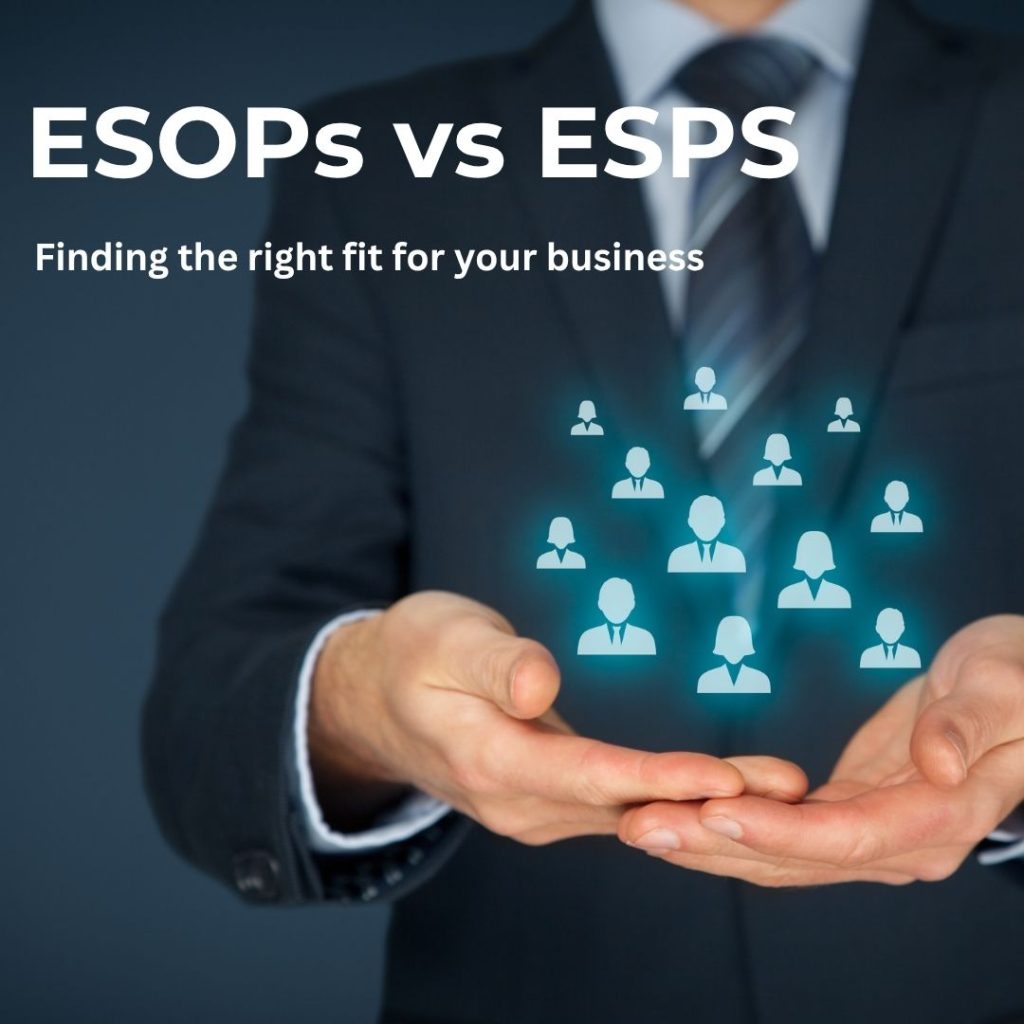As an employer, building a successful and sustainable company is not just about crafting a great product or service. It’s about creating an environment where your team feels committed, motivated, and, most importantly, like they are part of something bigger. To do that, offering ownership opportunities can be a game-changer. Employee Stock Option Plans (ESOPs) and Employee Stock Purchase Schemes (ESPS) are two powerful tools that can help align your employees’ goals with the future success of your company.
But which one is the best fit for your business?
What are ESOPs and ESPS?
ESOPs are a way to give your employees a stake in the company, allowing them to become partial owners. The beauty of an ESOP is that it’s not about giving away shares right away; it’s about granting options that they can later convert into actual shares.
The catch?
These options are typically subject to a vesting schedule, meaning employees need to stay with the company for a certain period to earn their shares.
From the company’s perspective, ESOPs are a way to build loyalty and cultivate a culture where employees are genuinely invested in the success of the business. Employees who feel like co-owners are more likely to take ownership of their work and contribute to the company’s growth.
However, setting up an ESOP involves more than just handing out options. You need to think about how the options will be structured, the vesting schedule, and how employees will exercise those options. Also, companies must ensure compliance with tax and regulatory requirements, provide clarity to employees about potential tax liabilities, and manage the impact on the company’s cap table.
Understanding ESPS
On the other hand, ESPS are company-run programs wherein participating employees are provided the option to purchase company shares at a discounted price. Employee contributions are made through payroll deductions between the grant date and the exercise date. ESPS are also known as Employee Share Purchase Plan (ESPP) This plan can be ideal if you want to provide employees with instant ownership without the complexity of a long-term vesting process.
The key advantage of an ESPS is that it’s simple and immediate. Employees feel valued right away, and they get to experience the financial rewards of ownership without waiting for years. However, ESPS also requires that your company issue shares upfront, so you need to consider the availability of shares and whether your company is ready to go through that process.
Differences: ESOPs vs ESPS
An ESOP provides employees with options to purchase shares at a future date, typically subject to a vesting schedule. This means employees acquire the right to buy shares over time, based on their tenure or performance, but ownership is not immediate, and shares only appear on the cap table when exercised.
On the other hand, an ESPS allows employees to purchase shares outright, usually at a discounted price, making them shareholders immediately. Unlike ESOPs, ESPS participants are listed on the cap table right after purchasing, gaining full shareholder rights from the start.
ESOPs are often used to attract or retain key talent with selective grants, while ESPS is usually offered to all employees as part of a public issue. With ESOPs, shares are issued only when options are exercised, whereas ESPS requires the company to issue shares at the time of purchase, depending on share availability.
What Works for You?
Ultimately, the decision between ESOPs and ESPS comes down to your company’s needs and goals. If you’re looking for long-term, strategic rewards for a select group of employees, ESOPs will help you align your team’s interests with the company’s future. However, if you want to offer more immediate financial rewards to a larger group, an ESPS might be the way to go.
Both plans have their advantages and can play a key role in attracting, motivating, and retaining top talent. The key is to understand what your company values most, immediate rewards or long-term loyalty, and choose the plan that aligns with your business strategy.
As you consider these options, remember that the right choice will not only impact your employees but also shape your company’s culture and future success. Take the time to weigh both plans carefully, and you’ll be well on your way to making a decision that benefits both your business and your team.
Can’t decide whether to implement ESOPs or ESPS for your employees? Book a call with us using the link below for FREE guidance on selecting the right benefits plan!


